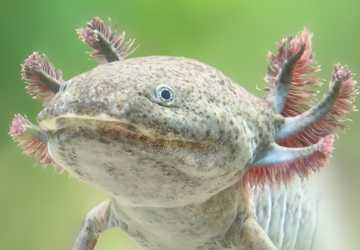Axolotls are unique amphibians that are native to Mexico. They have gained popularity in the pet trade for their unusual appearance and relatively straightforward care requirements. With their feathery gills, cute faces, and a range of available colors, axolotls offer an exotic yet accessible option for those interested in pet ownership. This beginner's guide to axolotls aims to cover the basics, from choosing the right habitat to understanding their diet and health needs, to assist those who are starting with axolotls.

One of the first aspects to consider when delving into axolotl pet care is their living environment. Axolotls are aquatic creatures that require a stable water habitat. A well-filtered aquarium of at least 20 gallons is usually recommended for a single axolotl. Adequate filtration and frequent water tests are crucial for maintaining a healthy environment, an aspect that anyone starting with axolotls should consider seriously.
Nutrition is another essential element of axolotl pet care. Axolotls primarily eat protein-based foods like bloodworms, earthworms, and small feeder fish. It's crucial to provide a balanced diet to ensure they receive the required nutrients for growth and well-being. Overfeeding should be avoided as it can lead to obesity and other health issues. Those who are new to axolotls may find it helpful to start with prepared axolotl pellets and gradually introduce more varied foods as they become more comfortable with axolotl pet care.
When you are starting with axolotls, understanding their behavior can be both fascinating and vital for their well-being. Axolotls are generally solitary creatures and may exhibit signs of stress if housed with other axolotls or different species. The less you take them, the less stressed they will be, which is a golden rule in axolotl pet care.
Axolotls can live up to 10–15 years if given proper care. They are susceptible to various health issues like fungal infections, skin abrasions, and digestive problems, which can generally be avoided with appropriate habitat maintenance and nutrition. Understanding these aspects is fundamental for anyone keen on starting with axolotls and wishing to provide a long, healthy life for their pet.
People who are starting with axolotls might be intrigued by the remarkable genetic characteristics that these amphibians possess. Axolotls are often used in scientific research due to their astounding regenerative capabilities. This not only makes them a subject of scientific fascination but also somewhat resilient creatures in terms of physical injuries. Understanding this scientific backdrop can add a layer of interest to your axolotl pet care journey.

Another crucial aspect to delve into when considering axolotl pet care is the substrate and decorations in their tank. A common recommendation is to use fine sand as a substrate to reduce the risk of ingestion and subsequent blockages, which can be harmful. However, some owners prefer to keep the tank bottom bare for easier cleaning. Decorations should be chosen carefully to avoid sharp edge. Providing hiding spots like tunnels or aquatic plants can also help in making the axolotl feel secure and comfortable in its new home. This point could be especially useful in your beginner's guide to axolotls as it directly relates to the animal's well-being.
If you're starting with axolotls, it's important to manage your expectations regarding interaction. Axolotls are not pets that enjoy being handled often. In fact, excessive handling can stress them out and cause health problems. They are more like 'watching pets,' meaning they're great for observing but not for interactive play. Some axolotls might follow your movements around the room or come to the front of the tank during feeding time, but that's generally the extent of interaction you should expect.
Like many other animals, axolotls can be affected by changes in the seasons. In the colder months, you might notice that your axolotl is less active or eating less frequently. This is generally normal and mimics their natural behavior in the wild. However, it's essential to monitor water temperature and ensure it stays within the acceptable range for axolotls, even during seasonal shifts. This attention to detail is a must-know for anyone interested in comprehensive axolotl pet care.
Last but not least, future axolotl owners must consider the financial aspect of axolotl pet care. Initial setup costs can include the tank, filter system, water conditioners, and the axolotl itself. Ongoing costs will cover food, occasional vet visits, and replacement of tank accessories or water conditioning solutions. While axolotls are relatively low-maintenance compared to other pets, they still require a financial commitment that should not be overlooked when starting with axolotls.
Adopting an axolotl can be a rewarding experience, offering a window into a fascinating underwater world. They may not be the most interactive pets, but they are captivating in their own right, and their care requirements are manageable even for those new to exotic pet care. For those who are seriously considering starting with axolotls, conducting further research and speaking with experienced owners can provide valuable insights. This beginner's guide to axolotls has aimed to lay down the groundwork, but the journey of axolotl pet care is a continuous process of learning and discovery.
By keeping these essential aspects of axolotl pet care in mind, even beginners can enjoy the rewarding experience of raising these unique creatures. Whether their unique physiology enchants you, interested in the minimalistic care they require, or simply looking for a pet that's out of the ordinary, axolotls offer an option worth exploring.